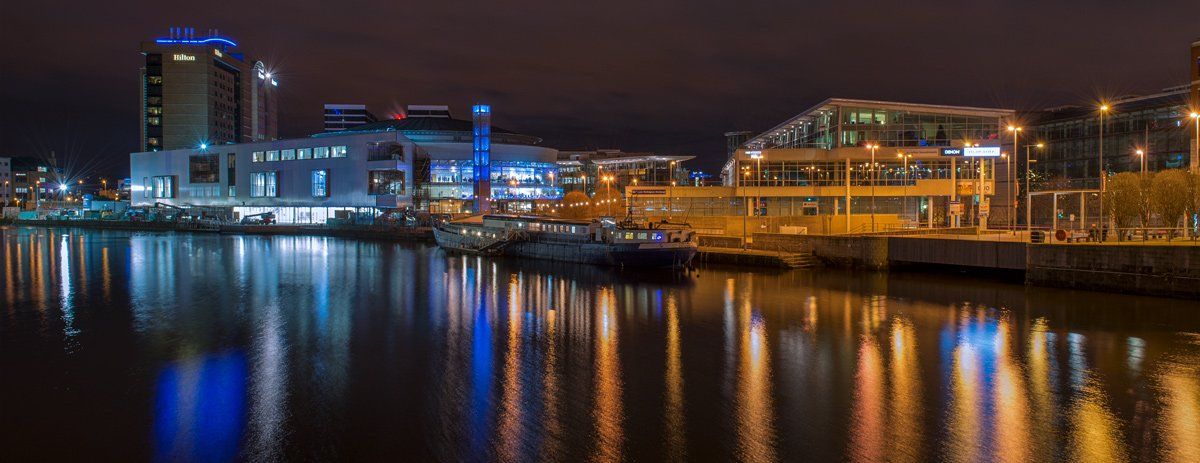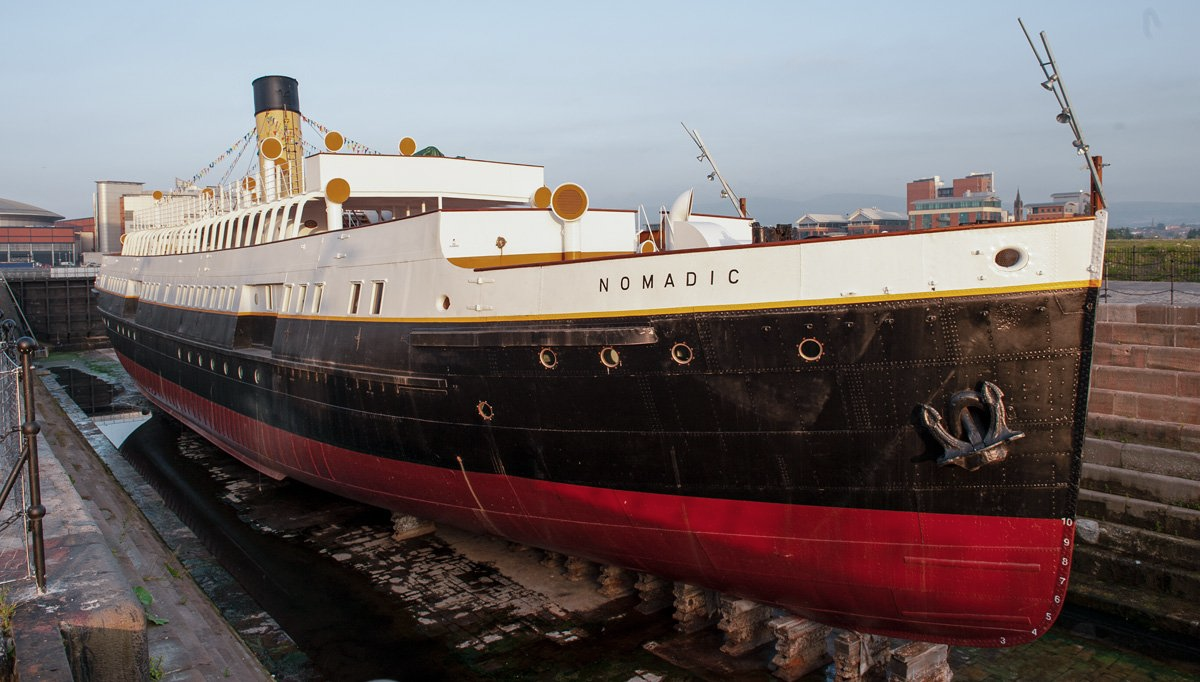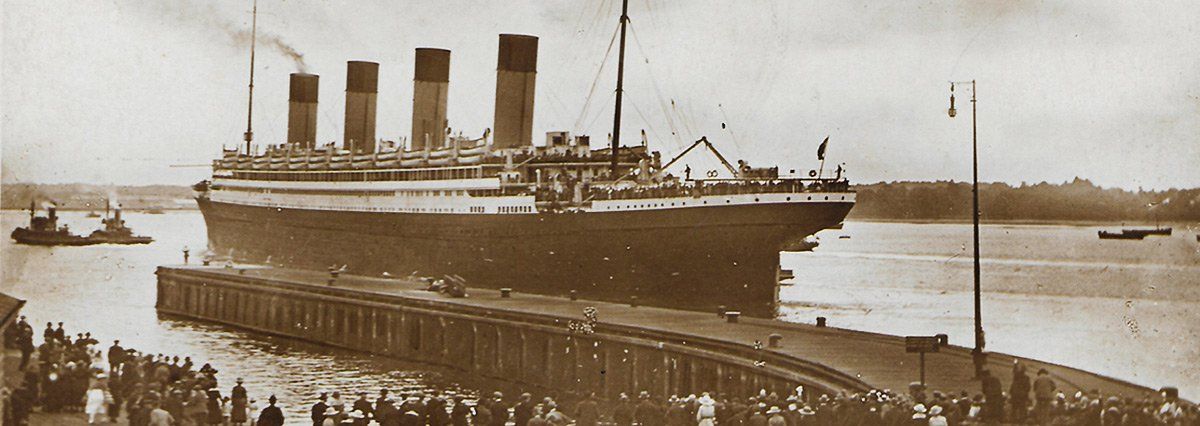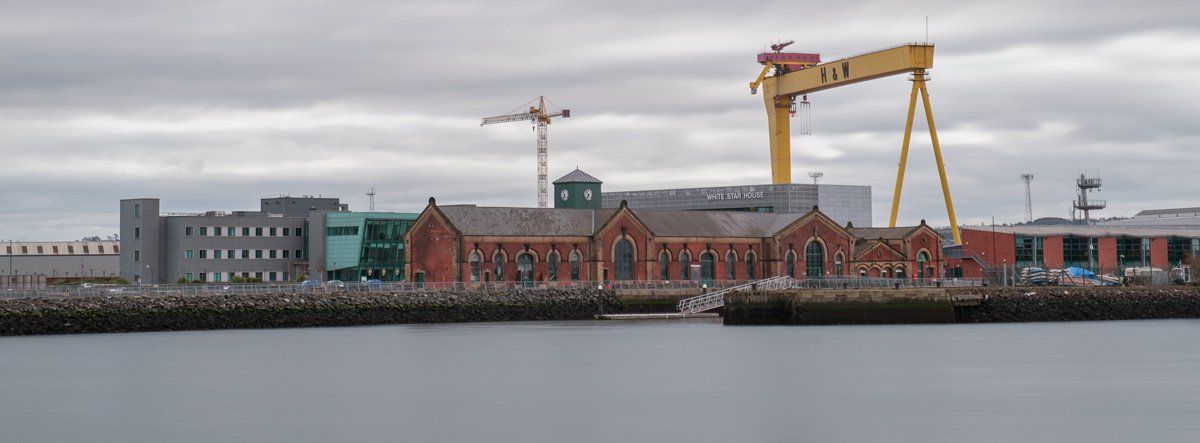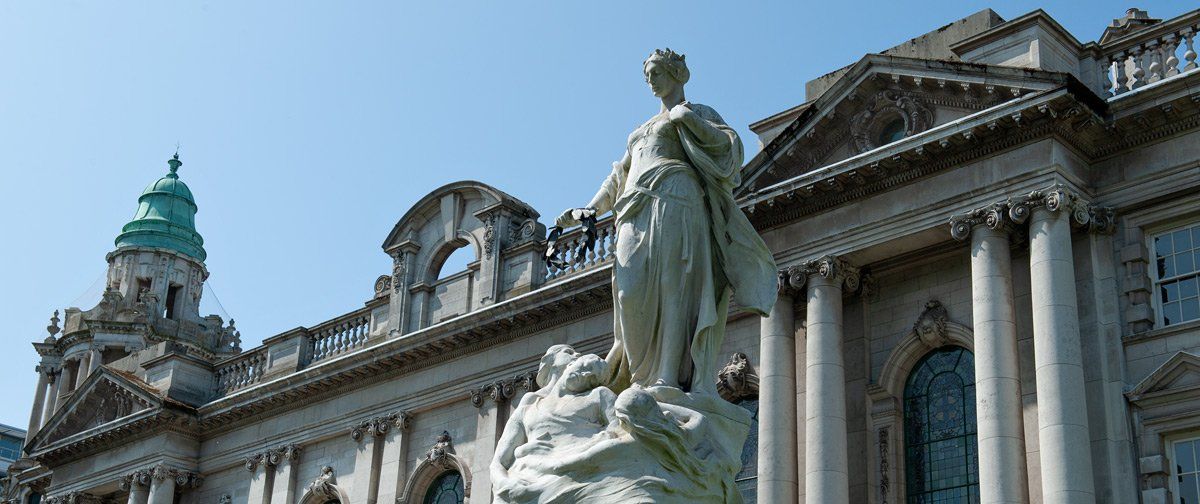Titanic Ships
SS TRAFFIC II – Passenger Tender
The Traffic was built for the White Star line at Harland and Wolff and launched on April 27th, 1911 with the capacity to carry 1200 passengers and baggage. The role of the ship was to service shallow ports and ferry passengers, baggage and mail. After attending the Olympic she was sent to Cherbourg and on April 12th, 1912 serviced the Titanic. With the outbreak of the First World War the ship was moved to Brest along with the Nomadic where they were used as troop carriers. After the war, the Traffic was sold to the Society Cherbourgoise de Transport, and later in 1934 to the Society Cherbourgoise de Remorquage et Sauvetage. She was renamed the 'Ingenieur Riebel' and used as a tender by the French Navy. In a move to slow German naval advances, the ship was scuttled at the entrance to Cherbourg Harbour, when France was taken over the German Navy raised the ship and fitted her out as an armed convoy escort ship in the German Navy. The ship was sunk on January 17th, 1941 when she was torpedoed by the Royal Navy in the English Channel.
The Traffic was built for the White Star line at Harland and Wolff and launched on April 27th, 1911 with the capacity to carry 1200 passengers and baggage. The role of the ship was to service shallow ports and ferry passengers, baggage and mail. After attending the Olympic she was sent to Cherbourg and on April 12th, 1912 serviced the Titanic. With the outbreak of the First World War the ship was moved to Brest along with the Nomadic where they were used as troop carriers. After the war, the Traffic was sold to the Society Cherbourgoise de Transport, and later in 1934 to the Society Cherbourgoise de Remorquage et Sauvetage. She was renamed the 'Ingenieur Riebel' and used as a tender by the French Navy. In a move to slow German naval advances, the ship was scuttled at the entrance to Cherbourg Harbour, when France was taken over the German Navy raised the ship and fitted her out as an armed convoy escort ship in the German Navy. The ship was sunk on January 17th, 1941 when she was torpedoed by the Royal Navy in the English Channel.
SS NOMADIC - Passenger Tender (Taken during developments)
The Nomadic was launched on April 25th, 1911 and although built at the same time as the Traffic they were not sister ships. Both ships were based at Cherbourg and attended the Titanic. When the First World War broke out the ships moved to Brest and served as naval tenders throughout the conflict. After the war, they were returned to the White Star Line who put them back to tender service in Cherbourg. They were sold to the Society Cherbourgoise de Remorquage et Sauvetage in 1934 and the Nomadic was renamed ‘Ingenieur Minard'’. When France fell during the Second World War, the Ingenieur Minard (Nomadic) escaped across the channel to England where she joined the Royal Navy and served along the south coast of England. It is interesting to note that these two White Star ships built at the south yard of Harland & Wolff served on opposing sides during the war in the same area.
The Nomadic was launched on April 25th, 1911 and although built at the same time as the Traffic they were not sister ships. Both ships were based at Cherbourg and attended the Titanic. When the First World War broke out the ships moved to Brest and served as naval tenders throughout the conflict. After the war, they were returned to the White Star Line who put them back to tender service in Cherbourg. They were sold to the Society Cherbourgoise de Remorquage et Sauvetage in 1934 and the Nomadic was renamed ‘Ingenieur Minard'’. When France fell during the Second World War, the Ingenieur Minard (Nomadic) escaped across the channel to England where she joined the Royal Navy and served along the south coast of England. It is interesting to note that these two White Star ships built at the south yard of Harland & Wolff served on opposing sides during the war in the same area.
After the war, the Nomadic returned to Cherbourg and continued as a tender to the Queen Mary and Queen Elizabeth. When this route ceased on the north Atlantic, the Nomadic was on the market as scrap, a reprieve came when she was bought and turned into a floating restaurant on the river Seine moored close to the Eiffel Tower. She was then bought and brought back to Belfast by the Nomadic Preservation Society. Today she has been refurbished and rest in the Hamilton Dry Dock looking fabulous in her White Star colours, incidentally the same dock she was fitted out in 1911. Her engines were removed when she went to Paris but there has been muted suggestions to refit engines. A great connection to the time of the Titanic and in my view one of the best and most poignant reminders of the whole Titanic story along with the Thompson Graving Dock where the Titanic was fitted out.
RMS OLYMPIC - Liner
The Olympic was launched on October 20th, 1910 with her maiden voyage to New York taking place on 14 June 1911. Returning from New York on October 27th 1914, she rescued the crew from HMS Audacious which had struck a mine off Tory Island, Donegal. The 26,000-ton battle cruiser was the first major naval casualty of the First World War. She was taken in tow by the Olympic but the lines parted and the ship capsized and sank in deteriorating sea conditions. The Ironically the mine that sank the Audacious was laid by the converted German liner 'Berlin', while heading back to Germany, bad weather forced her to shelter in Norway where she was impounded. In 1919 she was sent to Britain as war reparations, refitted and operated as the White Star liner SS Arabic, she was scrapped in 1931.
The Olympic was launched on October 20th, 1910 with her maiden voyage to New York taking place on 14 June 1911. Returning from New York on October 27th 1914, she rescued the crew from HMS Audacious which had struck a mine off Tory Island, Donegal. The 26,000-ton battle cruiser was the first major naval casualty of the First World War. She was taken in tow by the Olympic but the lines parted and the ship capsized and sank in deteriorating sea conditions. The Ironically the mine that sank the Audacious was laid by the converted German liner 'Berlin', while heading back to Germany, bad weather forced her to shelter in Norway where she was impounded. In 1919 she was sent to Britain as war reparations, refitted and operated as the White Star liner SS Arabic, she was scrapped in 1931.
On September 24th, 1915 Olympic was requisitioned by the Admiralty for war service and became known as Transport Ship T2810. Returning to England in 1918 she encountered the German submarine U103 in the English Channel, which she rammed and sank. In 1920, after a refit, the ship was back in service as a passenger liner on the Atlantic route. A strange event happened on a westbound crossing on 18th November,1929, two days out from New York the whole ship suddenly started to shake for no apparent reason. There was no other ship around or ice, so a collision was ruled out. The engines were running smooth so a dropped propeller was ruled out. The crew became more shaken by the mystery when they discovered that it had occurred close to where the Titanic lay some 12,000 ft below.
Eventually the wireless men confirmed that an underground earthquake had taken place causing the ship to shake. On May 15, 1934, Olympic was moving through thick fog at a reduced speed of 10 knots, despite blasting the ship's whistle and lights she was unable to detect the Nantucket lightship. At 11 am the lightship came into view, the Captain immediately ordered the engines astern but too late to stop the 45,000-ton ship slicing the lightship in half with the loss of seven of the crew of the lightship. On October 11, 1935, the Olympic was sold to the breakers yard at Jarrow. All the interior fittings which were some of the most beautiful fittings ever put on a ship were auctioned off. Large parts of the first-class lounge and stairway went to The White Swan Hotel in Alnwick, England where it is still in use today.
RMS BRITTANIC - Liner
The Brittanic was originally to be named Gigantic but because of the similarities to Titanic in reference, the name was changed. Although designed for the North Atlantic passenger route the ship never saw service on that crossing. She was launched on February 26, 1914, and after being fitted out was immediately requisitioned by the Admiralty for war service. The ship entered service as hospital ship G618. Her maiden voyage in December 1915 was to Mudros in Greece where she served during the Gallipoli Campaign. On her sixth voyage in November 1916, she struck a mine in the Kev Channel off the Greek mainland and sank within one hour with the loss of 30 passengers, 1036 survived.

